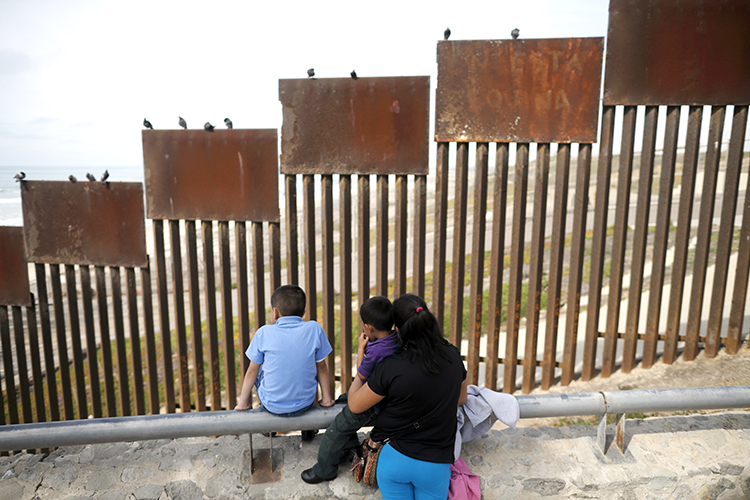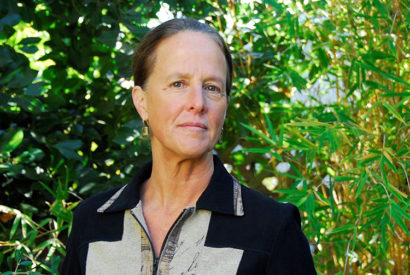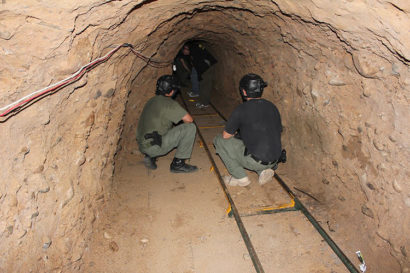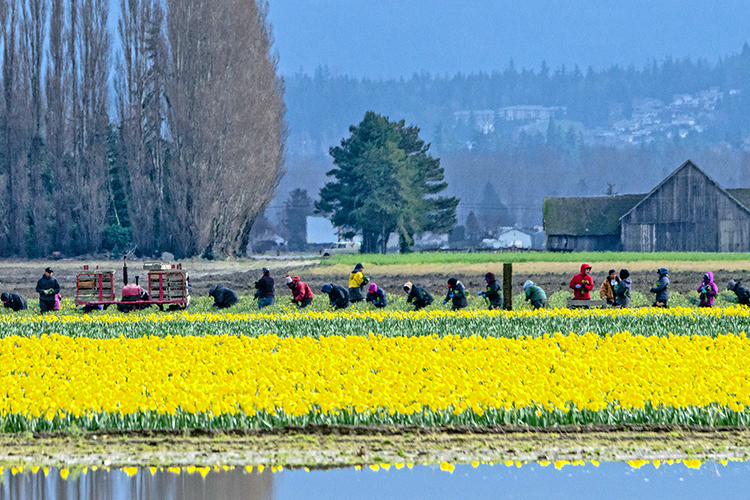Border walls don’t make us safer or stronger, says political scientist

When President Donald Trump was elected in 2016, he vowed to build a “big, beautiful wall” between the United States and Mexico. But the more than 700 miles of barriers already in place at the border — mostly built in the 1990s and early 2000s — have already created more harm than good, says Wendy Brown, a professor of political science at UC Berkeley.
In her 2010 book, Walled States, Waning Sovereignty, Brown argues that the recent demand for walls arises amidst crumbling nation-state sovereignty, itself an effect of globalization, and especially the global movements of capital and labor. But instead of nations becoming safer, the opposite happens.
Berkeley News talked with Brown about whether walls work, the problems they cause and the U.S.-Mexico border wall today.
Berkeley News: In your book, Walled States, Waning Sovereignty, you argue that leaders build walls when they’re feeling out of control, and that wall building is essentially a symbolic political theatrical act. Can you expand on that?

Wendy Brown: Walls are almost always political sops to particular constituencies. We have an extreme example of that in Trump’s base. The cry to “Keep them out!” demonizes what’s on the outside, sanctifies what’s on the inside, and denies interdependence — especially American reliance on immigrant labor and, in particular, highly exploitable undocumented labor. The wall has been effective in rallying support for a president who could really care less about whether we build the wall or not, and has surely been given the facts about how irrelevant walling is to either security or economic well-being in the United States. But he knows the political value of building a wall, or carrying on about building a wall, and he’s not the first. As the book argues, politicians have been capitalizing on the political theater of fortresses and walls for a long time.
Do people generally believe that walls make nations safer?
There’s no generalization you can make here. However, it’s significant that those who live in U.S. border states, and especially in border regions, are far less likely to support the wall than those who live in the midlands. That tells you that fear has been built for the latter, not that they actually encounter what they think they fear.
That said, the average Israeli today probably believes that the Israeli-built West Bank barrier has made them safer — that it has stopped terrorist bombings in Tel Aviv cafes and has made it more possible for Israelis to live a normal life. If you ask, “Well, does it also intensify the conflict?”, “Does it inscribe it in stone?” or “Does it produce new problems as it follows the path of the illegal settlements?”, many will say, “Sure.” But they will still say it “worked.”
One thing that I analyze in the book is the extent to which walling aimed at repelling certain things often simply alters their form or makes the problem more permanent, and often more dire.
What kinds of problems do these walls, like the U.S.-Mexico border wall, end up causing?
Most walling increases the magnitude and complexity of what is was built to repel. The U.S.-Mexico wall hasn’t stopped immigrants but has made immigration more expensive, dangerous and implicated with sophisticated criminal networks. That is, it has produced gang and mafia-like formations for smuggling goods, drugs and people that didn’t exist prior to the fortification of the border. So, it’s not actually keeping immigrants out, but it has magnified the cost and peril for migrants on the one hand and created an enormous illegal smuggling industry on the other.

It used to be that migrants walked or drove across the U.S.-Mexico border, came to work in Texas, California, Oregon and Washington seasonally and then went home. That system worked for a century. I’m not saying it was a great system — the work was exploitative, difficult and completely unprotected. It was replete with pesticide poisoning, heat exposure, obscenely low wages, miserable conditions and so forth. But walking or driving your truck across the border is a hell of a lot easier than paying a “coyote” tens of thousands of dollars to bring you in and hoping that you will not be abandoned by him in the desert with no water, food or map. The fortifications have also resulted in undocumented migrants being more likely to stay once they arrive, rather than moving back and forth, as they did for eons.
Finally, the wall builds ethnonationalism on both sides. It intensifies a sense of a “us” against “them.” This is as true of the U.S.-Mexico wall as it is of the West Bank wall. It is true of the scores of walls that have been erected in the recent decades in Africa, the Middle East, South Asia and Europe. Each barrier intensifies criminality, ethnonationalism, and of course, desperation. So, it’s a pretty disastrous piece of theater as a response to popular anxieties about a globalized world.
How have U.S. politicians used the border wall as a piece of theater?
The U.S.-Mexico border has a complex history that goes back to the 19th century. But the serious fortification began in the early 1990s. One of the stories I tell in the book is the way that politicians — on the left and right — competed for a couple of decades on the question of who was tougher on the border by continuously adding layers to the wall’s Tijuana site. Operation Gatekeeper was undertaken by the Clinton Administration, at the behest of Dianne Feinstein, to try to snatch the border issue from California Republicans.
The message was that Democrats are not soft on illegal immigration. Feinstein did a lot of photo ops in front of it. Republican Duncan Hunter comes along in the 2000s and gets the George W. Bush administration to triple-reinforce the wall — I mean, literally, make the wall three layers deep. When it was complete, Hunter does his photo ops to show that Republicans are tougher than Feinsteins’ Democrats on border security. But the whole thing is a joke, because all you had to do then was go 10 to 15 miles east of this theater to a find a broken barbed wire fence as the border marker.
Of course, that’s what Trump is playing on now — that there are still places you can get through, and we’ve got to seal them up with his $15-billion wall. But even if — God forbid — we wasted that kind of money and political good faith on a 600-mile wall, there are always ways to get through — tunnels, boats, trucks entering legally with migrants stashed around in them. The tunnel operations discovered under the Operation Gatekeeper fortifications are spectacular. Some of them include air conditioning, elevators, train tracks — they might run from a home or warehouse on one side of the border to the same on the other.

If more of the wall was built at the U.S.-Mexico border, what effect would it have on immigration?
Most refugees are trying to enter legally, that is, as refugees, not migrants. They’re hoping to obtain refugee status on the basis of persecution, war and other dangers in the places where they come from — Honduras, Nicaragua, basically every Central American nation, except Costa Rica and Panama. There is international law concerning the necessity of accepting refugees if they are in certifiable danger or have what’s called “vulnerability” status. A wall is no deterrent to this effort. They have the right to arrive and make the petition and to stay if that petition is successful. That’s what Trump is trying to thwart by insisting that they be processed in Mexico, which would then have to keep them rather than the U.S. if they are granted refugee status.
Migrants are another category. Would a wall stop those seeking to escape economic destitution by coming to the U.S. to work and live? As long as the United States has a demand for cheap labor, no wall will stop the flow. That is the contradiction, of course, at the heart of most walling today. It’s vivid in our own case. If you stopped all illegal migration and got rid of all undocumented workers tomorrow, entire U.S. industries would collapse: agriculture, construction, food processing, home health care, child care and other domestic work, janitorial work, landscaping and service. These are not the only industries in which the undocumented are employed, of course, but the industries themselves are largely reliant on such labor. A wall, then, is beside the point. Ask a farmer.
